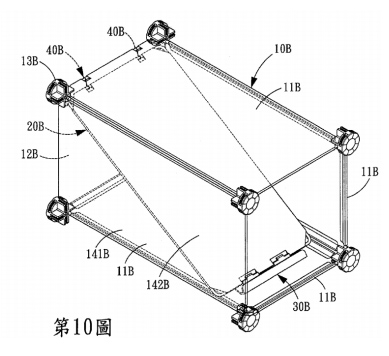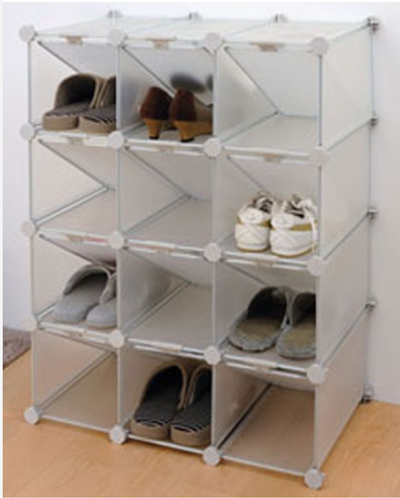IP Court to Define Boundary of Equivalents Protection in Recent Case
published on 13 Apr 2015
A decision by the Taiwan Intellectual Property Court (IP Court) was released on October 9th, 2014 to address the applicability of the doctrine of equivalents. The IP Court emphasized that the scope of patent protection encompasses literal meanings of the elements recited in the claims, as well as their equivalents. Under the doctrine of equivalents, an infringement accomplished out of substantially the same ways and functions to achieve substantially the same results shall be forbidden. The protection of equivalents aims at preventing any acts that attempt to avoid the enforceability of patent rights by unsubstantially modifying or replacing some features of the patent. The boundary of equivalent protection shall be carefully made under the prerequisite that the general public’s free and reasonable use of prior art is not compromised, in order to properly differentiate the said scope of patent protection from public known techniques. Upon the occasions where equivalent protection intends to expand and cover the areas in which the literal definition of patent claims has apparently excluded, such expansions or coverage shall be construed as unreasonable and undue. Equivalent protection shall not be applicable therein. (No.102–CivilPatentAppealRetrial- 75)
Choice of Words to Become the Center of a Legal Dispute
The patent at issue is a utility model (Registration Certificate M369078) where Claim 5 recites partially, as being transliterated as following,
[A] combined shoe rack, wherein said shoe rack comprises a combined frame, at least one movable spacer, at least one positioning member, and plural engaging members.
The engaging members as claimed are employed to engage one end to a side of the movable spacer and also engage another end to a siding corner situated at rear portion of the compartment structure so that the spacer may be pivotable about the corner. While the spacer pivots to a certain angle and posits along a diagonal plane, the compartment in the structure is then partitioned into two triangle-shaped sub-compartments.
The patentee accused the respondent of infringing said utility model patent by making allegedly infringing products (products at issue) and selling the same via both internet and physical distribution channels without patentee’s authorization. The products at issue were sent for infringement analysis, which determined that the patent claim literally reads on the products at issue. After obtaining this collaborating reference, the patentee sued for remedies including injunctions and damages for over NT$7,000,000.
At the trial, the patentee put up the products at issue during court hearing and referred one of them same as one of the examples in the patent. The patentee further alleged that the elements termed “plural engaging members” could be regarded as “positioning members” because they are identical objects with respect to their functionality. Moreover, the quantity of said engaging members can possibly be singular. The patentee conceded that supposed literal read-on infringement does not apply, but the products at issue should yet be subject to analysis of infringement under the doctrine of equivalents due to the fact that the single enlarged engaging member used in the products at issue does not serve any substantial difference.
The respondent argued by explaining that the products at issue do not fall into either the literal or equivalent scope of the patent claim. First, there were not any alleged “engaging members” installed at the rear end of the compartment but only one positioning member situated at the open end. Therefore it does not suffice the requirement of literal infringement. As of the analysis of equivalents, the limitations of engaging members in the patent at issue are regarding the quantity rather than size or dimension. The patentee’s alleged basis of infringement under the doctrine of equivalents is erred and rootless by arguing that the engaging or positioning member of the product at issue is larger than that of the patent at issue.
The trial panel at first instance did not find infringement of the patent. The patentee then appealed the case to the appellate level.
Claim Construction and Analysis of Doctrine of Equivalents
The appellate panel of the IP Court began by outlining the points of issue. It suggested that the term “plural engaging member” should be constructed before analyzing and determining whether the products at issue infringe the patent in the next step.
The IP Court reasoned that the purpose of patent claim construction is to impartially interpret the literal definition of a claim, as well as to reasonably delineate the scope of the same. By doing so, a patent’s technical contribution over the prior art should be fully considered in order to protect the patentee’s legitimate rights. Meanwhile, it is in the interest of the general public to use prior art liberally, and this should also be taken into account.
As far as the patent is concerned, an “engaging member” is construed as a component being able to engage one unit to another under ordinary terminology, while “plural” is employed to refer to any one of numerical quantities except for “one”, or is equal to “more than two (two included)”.
Subsequently, for equivalent protection, the IP Court explained that it is so formulated to prevent others from infringing a granted patent by merely changing or replacing unsubstantially the technical features but by using substantially the same way and function to achieve substantially the same result. For the sake of balance of interests, equivalent protection as an expansion beyond literal protection should rest upon the basis that the public’s free and reasonable use of prior art is not compromised and that the patent right is properly defined outside of the public domain.
Patent Found not Infringed
The IP Court found that the patentee had manifestly opted out the possibility of being “one” because the quantity limitation of the engaging members is defined to be “plural” while the quantity of positioning member in the very same claim is instead to be “at least one.” Plus, throughout the entire prosecution stage, the patentee could have amended such choice of language but chose not to. It would be unfair to allow the patentee to secure rights covering an area that is already considered part of public domain. Based on the foregoing and the all-element rule, the claim does not read on the products at issue.
Next, the IP Court found the claimed engaging member was absent in the products at issue and thus said products lack the same means of engagement or connection in an identical fashion. To be more specific, the spacer in the products at issue is unable to pivot about an axis as a feature yet presented in the patent. Since the products at issue employ substantially different means to attain substantially different functions and results, the products at issue do not infringe the patent under the doctrine of equivalents.
The decision at first instance was affirmed and patentee’s requests in appeal were therefore rejected.
Commentary
The meets and bounds of a patent claim shall be first determined before the Court analyzes whether said claim is infringed either by reading on an alleged product or under doctrine of equivalent. Further, when considering equivalent protection, the scope shall not surpass what is originally disclosed in the patent claims. In such way, the exclusive right of a patentee and the public’s interest of free use of prior art may thereby be harmonized.

* One of the examples provided in the patent, where two engaging members indicated as element No.40B are employed at the rear portion of the compartment.

* Suggested image of product at issue, where one enlarged positioning member is installed at the opening end of compartment.
DISCLAIMER: USE OF THIS IMAGE SERVES ONLY ILLUSTRATIVE AND NON-COMMERICAL PURPOSE. RELATED COPYRIGHTS OF THE IMAGE BELONG TO THE OWNER.
For any questions relating to this topic, please contact us at cjchen@tsailee.com.tw
|